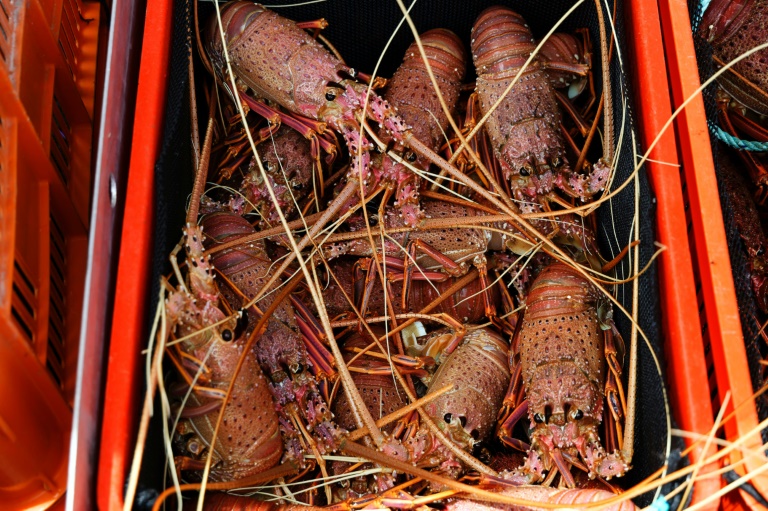Just because the summer season is long gone doesn’t mean you have to stop eating local. On the contrary, Colorado’s many hard-working growers and farmers continue to tend to their fields while the leaves turn — and even after that, into October and November.
You can find Colorado-grown fruits and veggies at farmers markets, farm stands and grocery stores well into autumn (and, in some cases, winter). And Colorado growers could use your support: Between 2017 and 2022, Colorado lost 2,837– or roughly 7% — of its farms, according to U.S. Department of Agriculture data.
“Like farmers across the country, Colorado farmers are struggling to survive,” said Marilyn Bay, executive director of the Colorado Fruit & Vegetable Growers Association. “There are many pressures — urban development, skyrocketing labor costs, increased regulations — causing farmers to call it quits.”
Here’s a snapshot of some Colorado-grown fruits and veggies you can enjoy this autumn.
Cabbage
Typically available through the end of November, cabbage is a versatile, nutrient-rich vegetable to add to your fall arsenal. It might seem like just another type of lettuce, but it’s actually in the same family as broccoli, Brussels sprouts and radishes.
Stock up now, then store it for months in a cool dry place, Bay said. Or, invest in a fermentation crock and turn it into sauerkraut. Cabbage also provides a satisfying crunch when thinly sliced and turned into coleslaw, or mixed with other veggies in a green salad.
“While it doesn’t freeze well by itself, when used in a recipe — such as kraut burgers, goulash or soup — it does well,” Bay said.
Onions
Onions are the workhorses of the home kitchen, providing hidden layers of umami and sweetness to all kinds of dishes. But they can also play a starring role, especially when cooked low and slow to soft, golden-brown perfection.
“If you haven’t caramelized onions, it is worth doing just for the aroma,” Bay said. “Caramelized onions are the base for French onion soup and are also great with pork and cheese in a quesadilla or a perfect topping for white-sauce pizza.”
You can find Colorado-grown onions through March at grocery stores. Or, stock up now at farmers markets and farm stands.

Winter squash
Zucchini season is over (thank goodness) but don’t sleep on its heartier, thicker-skinned cousins, the winter squashes. Loaded with vitamins and high in fiber, these decadent cucurbits will keep whole in storage for months. Or, you can halve them, roast them in the oven, scrape out the flesh and freeze in zipper bags.
“I have served my fall crop of squash the following spring for Easter dinner,” Bay said.
Buttercup and delicata are two of Bay’s favorites. But there are so many kinds you could practically eat a different squash every week of winter. Acorn, kabocha, red kuri, butternut, Hubbard, turban, spaghetti — the list goes on.
Pro tip: Any time a recipe calls for pumpkin, don’t be afraid to substitute winter squash, Bay explained. “Use winter squash flesh to make pumpkin gnocchi — which is fantastic served with sage butter — pumpkin cheesecake, pumpkin bread and so much more.”

Beets
You’ll probably notice beets popping up on Colorado restaurant menus as temperatures start to drop. But Tim Lu, the co-owner and executive chef of Noisette, says these sweet, earthy orbs are also easy to prepare at home. They’re usually available through the end of November, and come in several different varieties — from red to golden to striped.
“Beets are extremely versatile in that they can be shaved raw as a salad garnish, roasted whole and eaten warm with vadouvan spice, or roasted whole and served cold, dressed with a vinaigrette as a salad,” said Lu, who owns the 2-year-old French restaurant, at 3254 Navajo St. in Denver with his wife, Lillian Lu. “The sweetness of the beets pair well with bitter greens and a soft fresh cheese like fromage blanc.”
Pears

Helen H. Richardson, The Denver Post
Pears are sold at a kiosk at Union Station during the fall of 2017. (Photo by Helen H. Richardson/The Denver Post)
While apples tend to hog the spotlight, don’t forget to add Colorado-grown pears to your shopping list. Pears are an early fall fruit, so you’ll most likely find them in October.
Slice them up and eat them raw, or poach them in French cider with cinnamon, cloves, anise and nutmeg, like Noisette’s co-owner and pastry chef Lillian Lu does.
“I had (poached pears) on the menu a couple years ago and I had at least two diners who were brought to tears from the dessert because it reminded them of fond childhood memories,” she said. “You can serve the poached pear with creme anglaise or vanilla ice cream.”
Leeks
Nope, they’re not just a spring treat — leeks make another appearance come autumn. Use these mild, delicate alliums anywhere you’d normally use onions for a subtle flavor twist, or build a dish around them. Peter Wanberg, co-owner of City Park Farmers Market, likes to use them in leek and potato soup or to make a quick, simple homemade pasta sauce.

Apples
Is there anything better than biting into a crisp, juicy, tart apple in the fall? Well, maybe only noshing on apple pie, apple crisp and apple donuts. Fortunately, Colorado still has many dedicated apple growers — and several orchards around the state will let you pick your own, which is a fun, kid-friendly activity.
Each Colorado-grown variety has a unique appeal but, “Honeycrisp is hard to beat,” Wanberg said.
“Other than just eating them raw, we make a lot of apple crisp at our house,” he said. “Use the cores for apple cider vinegar.”

For even more fall produce
The Colorado Fruit & Vegetable Growers Association has an online harvest calendar that shows approximately when fruits, veggies and herbs are typically available in Colorado: https://coloradoproduce.org/nutrition-health/
Use the CFVGA’s online “Find Colorado Produce” tool to search by food, region or shopping method: https://cfvga.memberclicks.net/colorado-produce-directory#/







